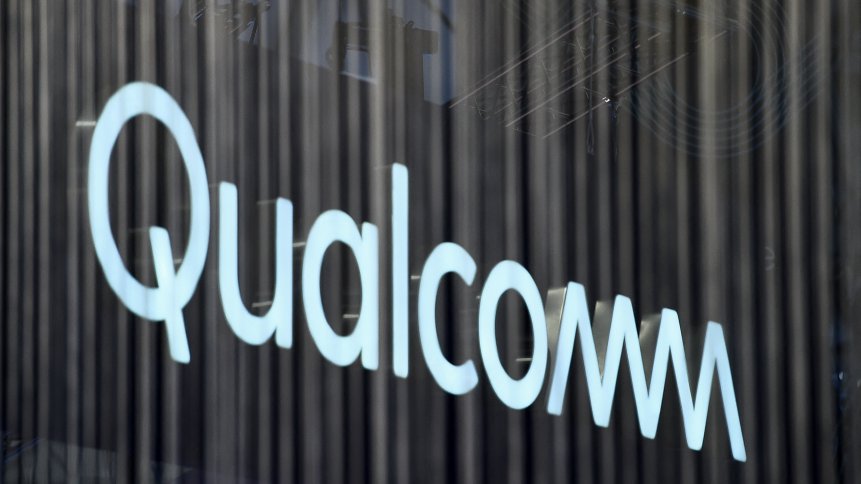Qualcomm is once again considering a foray into the server market. Will it succeed this time?

- Rumors have it that Qualcomm is plotting a return to the server chip market — a decade after it started showing apparent interest in the segment.
- Qualcomm is apparently “seeking customers for a product stemming from last year’s purchase of chip startup Nuvia” and Amazon is among the companies that have agreed to look at the chip.
About a decade ago, former Qualcomm Inc. Chairman Paul Jacobs started prepping his company to break Intel’s dominance in the server market. Despite having dominated the mobile phone market, Qualcomm grew an insatiable thirst for computer servers and went on spending the next five years and hundreds of millions of dollars designing competing processors. In 2017 finally, Qualcomm launched its first line of Centriq data center chips.
The Qualcomm Centriq 2400, the world’s first and only 10nm server processor at that point of time, was the culmination of an intensive five-year journey for the Qualcomm Datacenter Technologies (QDT) team. Eventually in the end of 2018, following multiple reports of possible exit, resignations and downsizing of their data center workforce, Qualcomm signaled the end of the road for its ARM-based server processor.
After all, Intel controlled over 95% of the world’s data center CPU market with its Xeon chips — an industry standard for over two decades. That has made it tough for smaller chipmakers to gain any meaningful traction in the market. What Qualcomm thought was that it could leverage its leading position in ARM-based mobile chips to expand into the data center market.
Unfortunately, Arm Holdings chip designs then were generally associated with more power-efficiency though lower horsepower output than Intel’s x86 designs. The Centriq marked a promising leap forward for ARM-based servers, but not enough data center operators were willing to make the switch. After all those failed buyout attempts that came after, Qualcomm is certained then that its data center unit is destined to wither away and become a footnote in its history.
Until 2021, when Qualcomm announced that the company had completed the acquisition of NUVIA, a start-up company consisting of industry veterans who were behind the creation of Apple’s high-performance CPU cores — who were also aiming to disrupt the server market with a new high-performance core called “Phoenix”.
Now, according to Bloomberg’s report at least, Qualcomm is seeking customers for a product stemming from last year’s purchase of Nuvia. Which means, Nuvia has come up with a processor dedicated for the data center space. Citing people familiar with the matter, Bloomberg said Amazon.com Inc.’s AWS business, one of the biggest server chip buyers, has apparently agreed to take a look at Qualcomm’s offerings.
Although after Qualcomm bought the company, it pivoted its new chip division from server chips to laptops and phones, updates from sources now indicate that Nuvia’s original goal of building server chips will finally be pursued. Interestingly, even the current CEO Cristiano Amon is trying to turn Qualcomm into a broader provider of semiconductors, rather than just the top maker of smartphone chips.
The upside of their attempt (if there is one) this time around is the fact that Qualcomm has Nuvia, staffed with chip designers. Even when Amon acquired the business for about US$1.4 billion in 2021, he said that its work will help revitalize Qualcomm’s high-end offerings for smartphones and personal computers.
But essentially, Nuvia was founded as a provider of technology for the server industry. As it is, data-center processors alone generate US$28 billion a year, according to Bloomberg Intelligence analyst Mandeep Singh. “Qualcomm’s re-entry to the Arm server market broadens its reach into one of the bright spots in semiconductors,” he said in a note last Thursday.
Globally, spending on cloud computing infrastructure — the kind of equipment that Amazon, Google and Microsoft use to whisk data around the world — totaled US$73.9 billion last year, according to research firm IDC, up 8.8% from 2020. That said, the potential rewards for Qualcomm could be substantial. To put it simple, successfully pushing itself into server chips would mean Qualcomm would sell much bigger-ticket items.
“The company’s phone offerings are typically priced in the tens of dollars. The highest-end server processors carry prices of more than US$10,000 per chip,” Bloomberg noted. But competition won’t be an easy battle, as even Intel who was once the market leader in this space, has been doing all it takes to stay ahead of the game after losing market share to AMD and homegrown chips like Amazon’s.










